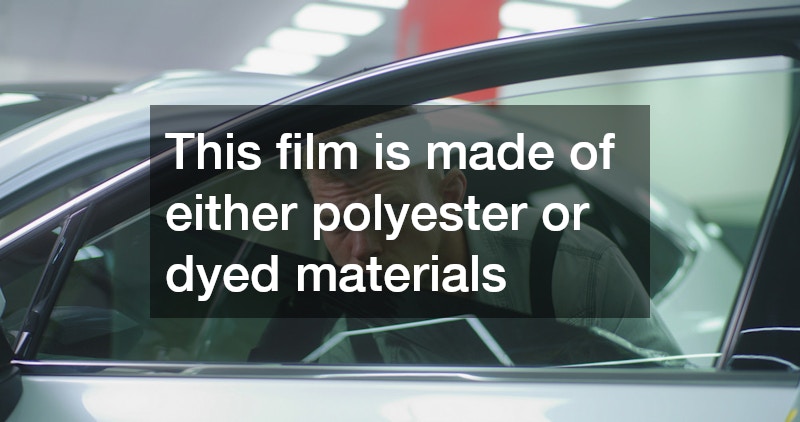Auto glass tinting is a popular way for car owners to enhance the appearance of their vehicles while also providing privacy and reducing heat and glare. Tinting involves applying a thin film to the interior of the vehicle’s windows, which can vary in darkness depending on the percentage of tint used. Understanding the different tint percentages and how they affect visibility is crucial for both safety and legality.
What Is Auto Glass Tinting?
Auto glass tinting is the process of applying a thin film to the interior of a vehicle’s windows to darken them. This film is made of either polyester or dyed materials and is available in various shades to suit individual preferences. The tinting not only enhances the aesthetics of the vehicle but also provides several practical benefits, such as reducing glare and heat, protecting the interior from UV rays, and increasing privacy for the occupants.
Car owners can choose from a range of tint percentages, with lower percentages allowing more light to pass through and higher percentages providing greater darkness. The tinting process involves cleaning the windows, cutting the film to size, and carefully applying it to the glass. While some people opt for DIY tinting kits, professional installation is recommended for optimal results.
It’s important to note that auto glass tinting laws vary by state, with regulations governing the permissible darkness levels for different windows. Before getting your windows tinted, it’s essential to be aware of the legal requirements in your area to avoid fines or penalties. Working with a reputable tinting provider can help ensure that your tinted windows comply with local laws.
How Do Different Tint Percentages Affect Visibility?
The percentage of tint on your vehicle’s windows can significantly impact visibility both during the day and at night. For example, a lower tint percentage, such as 50%, allows more light to pass through the windows, making it easier to see both inside and outside the vehicle. However, this level of tint may not provide as much privacy or heat reduction as a higher percentage.
On the other hand, a higher tint percentage, such as 5%, offers greater darkness and privacy but can reduce visibility, especially at night. The decreased visibility can be a safety concern, as it may hinder your ability to see clearly in low-light conditions or when reversing. Finding the right balance between aesthetics, privacy, and visibility is key when choosing an auto glass tinting percentage for your vehicle.
It’s also worth considering the type of tint material used, as certain films may have a higher impact on visibility than others. Some tint films are designed to minimize distortion and maintain clarity, ensuring that your view remains unobstructed even with darker tint percentages. Consulting with a professional tinting provider can help you select the most suitable tint for your needs.
What Are the Legal Regulations Regarding Tint Percentages?
Before tinting your vehicle’s windows, it’s essential to familiarize yourself with the legal regulations regarding tint percentages in your area. State laws dictate the maximum allowable darkness for different windows, such as the front windshield, front side windows, rear side windows, and rear windshield. These regulations are in place to ensure that drivers have adequate visibility and to prevent obstruction of law enforcement officers’ view inside the vehicle.
Violating auto glass tinting laws can result in fines, citations, or even vehicle impoundment, depending on the severity of the offense. To avoid legal repercussions, it’s crucial to comply with the tint percentage limits set by your state. Some states also require tinted windows to display a certification label indicating that the film meets the legal requirements, further emphasizing the importance of adhering to regulations.
Professional tinting providers are well-versed in the local tinting laws and can advise you on the appropriate tint percentages for your vehicle. By working with a reputable provider, you can ensure that your tinted windows not only look great but also meet the legal standards for visibility and safety on the road.
Auto glass tinting offers numerous benefits, from enhancing privacy and aesthetics to reducing heat and glare inside the vehicle. Understanding the different tint percentages and their impact on visibility is essential for making informed decisions when tinting your windows. By considering factors such as darkness level, tint material, and legal regulations, you can achieve the perfect balance between style and safety with your tinted windows.



